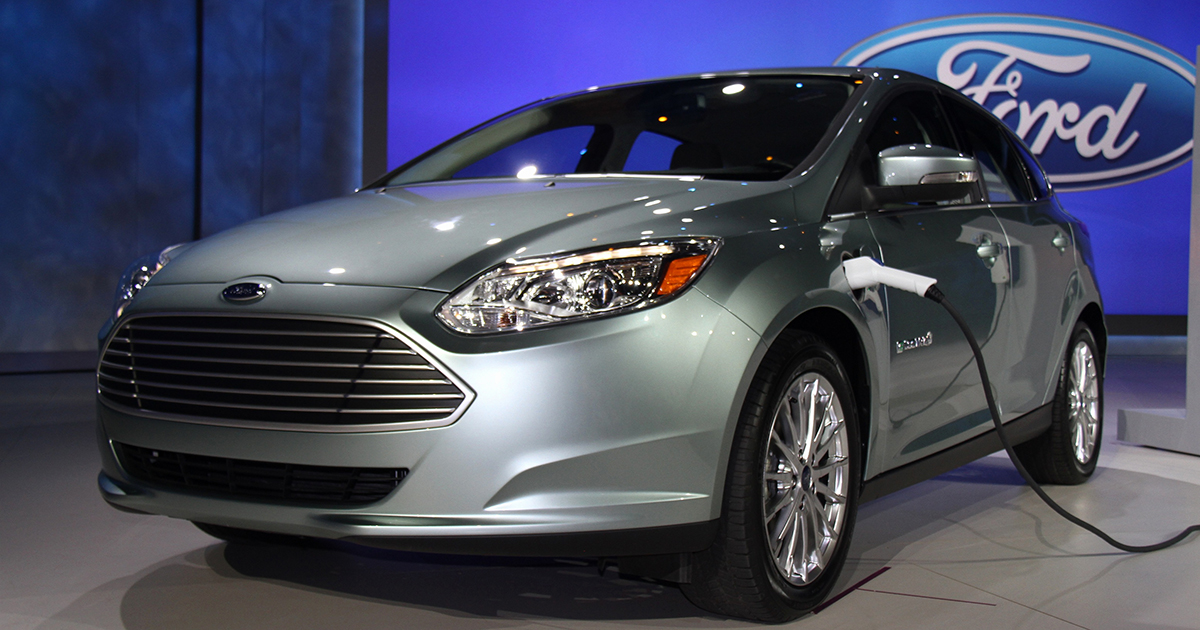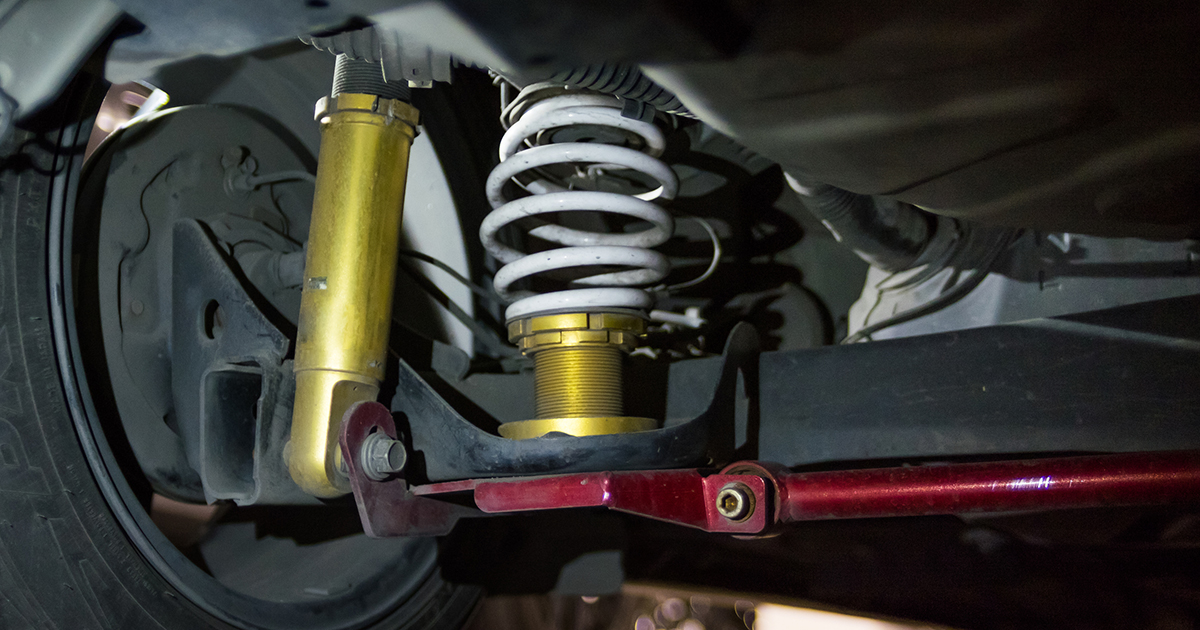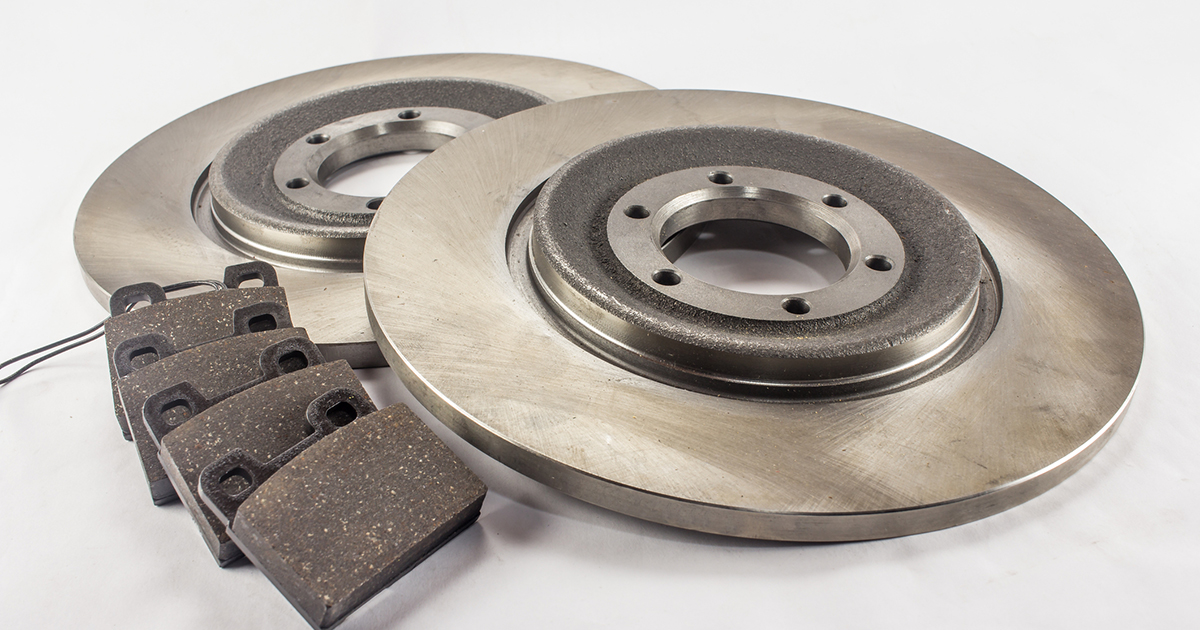Innovations That Changed The Auto Industry And Possibly The World
The automotive industry is responsible for introducing the world to many innovations. While not every technology on this list started in the auto world, automakers are responsible for taking the technology and making it accessible and putting it in the grubby hands of the general public. Some of these technologies have faced criticism as destructive to the social fabric or industry, while others have redefined safety standards around the globe.
ABS Brakes

Every car sold today comes with some form of Anti-lock Braking System (ABS). Designed to minimize braking distance and wheel lock, the aviation industry developed these systems before being brought to the consumer auto market. On airplanes, the new braking system allowed for shorter landing and take off zones, which increased the available time and service area of aircraft. The innovations made in the aerospace industry would eventually be ported over to the auto world where it would be seen first on the race track, and then in every consumer vehicle sold today. While still evolving, the anti-lock braking system opened the door to modern traction control systems available in most consumer vehicles. These innovations come at a cost, however, and ABS doesn’t have a perfect record.
While ABS can reduce braking distances on hard surfaces, such as asphalt and concrete, it has a less stellar reputation on loose or slick surfaces such as sand, gravel, and ice. A 1999 study by the Nation Highway Traffic Safety Administration found that ABS led to a 27.2 percent increase in stopping distance on gravel while a 2004 study from Australia found that ABS equipped cars were thirty-five percent more likely to be in run-off-road crashes. These stats point to ABS’s other function: maintaining control during a hard braking situation. ABS keeps the wheels from locking so the driver can continue to maneuver around the obstacle. On loose surfaces, locking can provide additional grip, but on most asphalt roads, locked wheels mean a loss of control in a skid. To account for the fact that people don’t always drive on freshly paved streets, some manufacturers have included an off-road setting that disables the ABS.
Seat Belts

Seat belts have been around in some form or another since the mid-nineteenth century, but the three-point system that we all recognize from cars today wasn’t introduced until the 1950s. Dr. C. Hunter Sheldon performed the autopsies of several car wreck victims and found that the lack of restraint systems or basic lap belts in contemporary vehicles were often to blame for the cadavers on his table. Dr. Sheldon published his findings in 1955, and by 1959, the US Congress passed legislation requiring automakers to adhere to specific safety standards.
The first adaptors of these new safety features were Nash, who offered optional seat belts as early as 1949, and Ford, who offered them in 1955. The Swedish Saab was the first to make seat belts a standard feature in their vehicles in 1958. Our current three-point system was patented in 1955 and adapted by and made the standard by Volvo in 1959. According to the CDC, seat belts reduce the risk of death to front seat passengers in an accident by 45% and halve the risk of serious injury. As seat belt technology increases with better testing, materials and vehicle standards, we can expect those numbers to increase.
The Electric Motor

The electric motor was an invention ahead of its time. The first practical application of the electric motor was in 1828 with Anyos Jedlik’selectromagnetic self-rotors -,which was later improved upon and by 1837 - electric motors were being used to run printing presses and power tools. Unfortunately, with no electricity distribution network - known better as the electrical grid - and the high cost and poor efficiency of batteries at the time made these motors prohibitive for serious use. Since Jedlik was a wizard from the future, he built the first model electric car in 1855. Unfortunately, his model wasn’t scalable with the technology of the time, as other manufacturers would find out in the fifty years following Jedlik. Though a handful of battery-driven cars would come out, by 1904 the limitations of battery storage and electric efficiency were clear, which opened the door for Henry Ford’s assembly line petrol engines to set the standard for the next century.
A lot of improvements have been made since Jedlik’s first model, and the automotive landscape has had a complete overhaul. Companies like Tesla are pushing the technological boundaries of electric vehicles and the electric motor. Supercar manufacturers like Ferrari are now introducing hybrid and fully electric models to take advantage of the ridiculous amounts of torque available on demand by electric power plants. The electric motor is directly responsible for the recent shift in auto technology, as well as the future of our infrastructure. With more electric vehicles on the road, charge stations will need to be as commonplace as gas stations are now and the grid itself will need updating to handle the increased cost associated with switching from oil to an electric economy.
Suspension Systems

It may be hard to imagine, but modern suspension systems are relatively old, as far as auto innovations go. Originally crafted for the much slower ox-drawn carriages of the 17th through 19th centuries, early suspension systems were little more than just chains and leather straps that suspended the body of the carriage off the frame - hence the name suspension. Once the internal combustion engine and the automobile were created, the literal suspension system just couldn't handle the stresses of the faster horseless carriages. Innovations came out to combat the more extreme wear and tear of these new machines. It's surprising to know that most of the technologies that keep our cars smooth and steady on the road today were invented before WW2. Around the turn of the 20th century, leaf springs were introduced and would become standard equipment until the 1970s. Coil springs were first added to cars in 1906 and are still used regularly today. The Lancia Lambda introduced the first independent suspension system in 1922, and by 1932 the system had been brought to mass-market. All of these systems still exist in more refined forms on vehicles today.
The purpose of the suspension system is to strike a balance between a comfortable ride and maintaining traction on the road. Early systems were notoriously hard and stiff, resulting in roll-overs, a bumpy ride and reduced traction on rough or loose surfaces. Since providing a comfortable ride while maintaining contact with the ground is exercises in controlling opposing forces, the need for efficient suspension systems on cars forced early automakers to innovate. Most vehicles have used the same basic technology in their suspension systems since 1932. After a century of fine-tuning, combining technologies and building on those early designs, automakers have managed to bring us a ridiculously tight balance of grip, handling, and comfort to the vehicles of today. Because of these components and the century of research behind them, cars now handle more responsively, provide a smooth ride that can be more distracting than the bumps you don't feel, and most importantly, are far safer to drive and ride in.
Airbags

Now a standard piece of safety equipment in all vehicles, the airbag was initially marketed as a replacement for shoulder belts. First developed in the 1950s by John Hetrick, the first airbags were inspired by the torpedo launch system used in submarines. Hetrick used compressed air and a mechanical release system based on the torpedo systems he encountered while in the Navy. Research throughout the 1960s, however, found that compressed air on an automated system could not inflate the bag fast enough for safety purposes. This led to the chemical and electronic systems in modern vehicles that inflate nearly instantaneously upon impact.
When seatbelt legislation was first being introduced and the safety standards for automakers being set, the airbag was proposed as an alternative to the three-point seatbelt we are all familiar with today. Usage rates for seat belts in the early 1970s was quite low, so as an alternative to their customers dying because they wouldn’t use their safety equipment, automakers began installing passive safety features. In 1971, Ford released an experimental fleet of cars with airbags and lap-belts instead of the three-point design. In 1974, GM followed suit and released their Air Cushion Restraint System (ACRS), which was available in full-sized models from Cadillac, Buick, and Oldsmobile.
The Moving Assembly Line

Assembly lines are ubiquitous with factory work today. Their invention is often attributed to Henry Ford, who famously started the second automotive assembly line - the first was launched by Ransom Olds, of Oldsmobile fame. Before Ford, moving production lines can be traced back as far as the early 12th Century, to the Venetian Arsenal. This early production line saw ships assembled by tradesmen as the boats floated down the river past their stations. This ancient factory could produce and arm a vessel per day. Henry Ford, however, took his inspiration from the slaughterhouses of Chicago. After William "Pa" Klann saw the disassembly of cattle in Chicago, he brought the idea to Peter Martin, who would become the Head of Production at Ford and implement the system. By the end of 1913, Ford was producing more cars than they could paint. To avoid bottlenecking the line, Ford cut all color options except the now iconic "Japan Black" because it was the only paint that would dry fast enough to keep production running smoothly.
While Ford may not have been the man behind the revolutionary innovation, his company did force the market's hand. In the century since Ford implemented the moving assembly line, every mass producer has adopted the production technique. His influence has permeated through the production industry around the world, and today we see the next evolution employing automation. For those of you who work in these factories, you can blame Henry Ford for having to stand in one spot for hours, screwing on the same bolt over and over. If experts are to be believed, however, you may just want to bite your tongue and enjoy working there while you can; automation is supposed to take over nearly 80% of factory positions over the next decade.
GPS

Like many technologies that make their way onto consumer markets, GPS was deployed by the military well before we got our hands on it. The launch of the USSR’s Sputnik satellite pushed the Cold War and the space-race into high gear. When US military scientists realized they could track the Soviet satellite using the Doppler Effect, wheels began turning and eventually the groundwork for a satellite-based location tracking system was being worked on. The first generation, called TRANSIT, paved the way for the system we use today.
In 1983, President Reagan announced that the GPS system would be available for civilian use once it was finished. It’s hard to imagine that the early TRANSIT system could only provide an accurate location once every hour to a massive receiver when our current systems provide up to date information to our mobile devices, or even to our vehicle directly. GPS technology has changed the way we navigate and interact with the world, meaning reading a map and planning a route has never been so easy. Companies like Alphabet (formerly Google) and Tesla have made GPS a backbone system of their self-driving cars, working in tandem with the multitude of sensors also on the vehicle. The ability to pinpoint your location from anywhere is a remarkable step forward in navigation that has opened the door to a whole world of possibilities.
Autopilot And Autonomous Driving

Like many of the items on this list, autopilot got its start in aviation. First Development in 1912, implemented in 1914. The first autopilot systems were designed to give pilots a break from the constant corrections that wholly manual aircraft require. Using a gyroscope and hydraulics these early systems were used to stabilize the roll and pitch of the aircraft so the piloting crew could focus on navigation on long flights. Over the last sixty years, these systems have improved to include automatic landing systems. Car manufacturers are now seeing the same slow evolution of automation, starting with cruise control in the 1950s, and growing to include automatic parking and currently pushing towards full autonomous functionality.
While the term autonomous driving has taken over in the common vernacular, our current technology is best described as automatic driving. While companies like Tesla and Google are working towards cars that don’t need any human input or oversight, the current technology still requires humans to be aware and make corrections instead of letting the vehicle drive entirely of its own accord. Fully autonomous cars are expected to hit city streets in the next decade and are supposed to be highly disruptive to the auto market. When automatic and autonomous cars hit the roadways, their impact is expected to lower the collision and fatality rates on roads by up to ninety percent. Unfortunately, when autonomous vehicles roll out en masse, they are also likely to replace an estimated five million jobs across the USA, including taxi drivers and cargo haulers.
Disc Brakes

Disc brakes have come to dominate the braking market. By pinching a rotating disc between a set of calipers, disc brakes are more efficient, provide better stoppage and stay cooler than drum brakes. Because of the better airflow and cooling around the friction point, discs suffer much less fade - a loss of grip by the brake when hot or under stress - and have fewer issues with material getting in the system than a closed drum brake systems. Discs are pretty well standard on most vehicles these days, including motorcycles, mopeds and even bicycles.
While early development of disc brakes started in the 1890s, they didn’t see mass production for the automotive market until 1955, when they were introduced on the Citroën DS. After a brief but inspiring appearance on the race circuit in the mid-1950s, and a limited six-month run by Crosley in 1950 that was quickly abandoned for poor reliability, the disc brake wasn’t properly introduced to the North American market until 1963 with the Studebaker Avanti. By 1965, discs were standard equipment on the Rambler Marlin, the Thunderbird, and Lincoln Continental. With the rise of anti-lock braking systems, disc brakes became the standard for most automakers by the mid-1990s, and have almost entirely replaced drum-brakes today.







